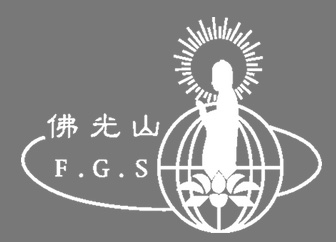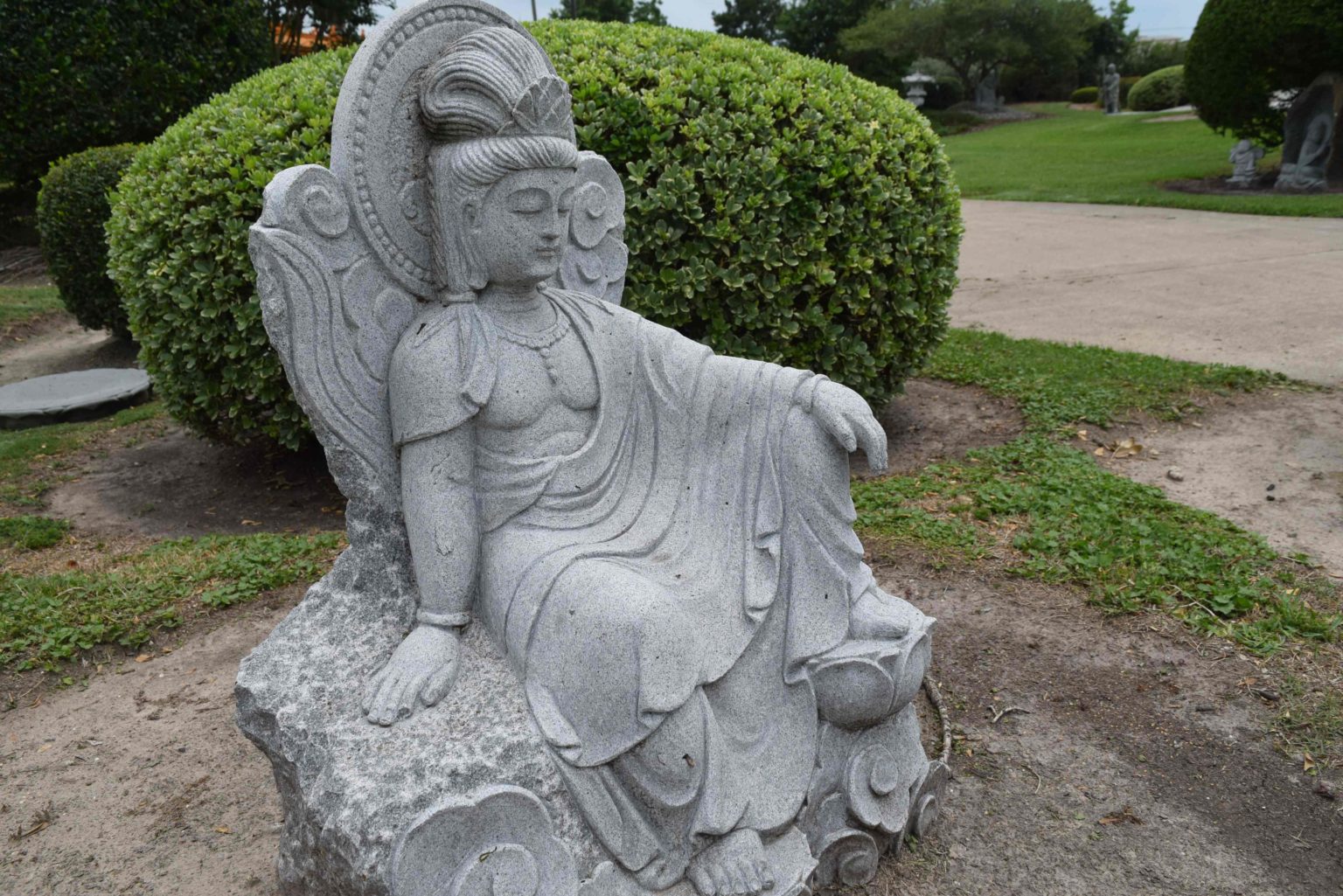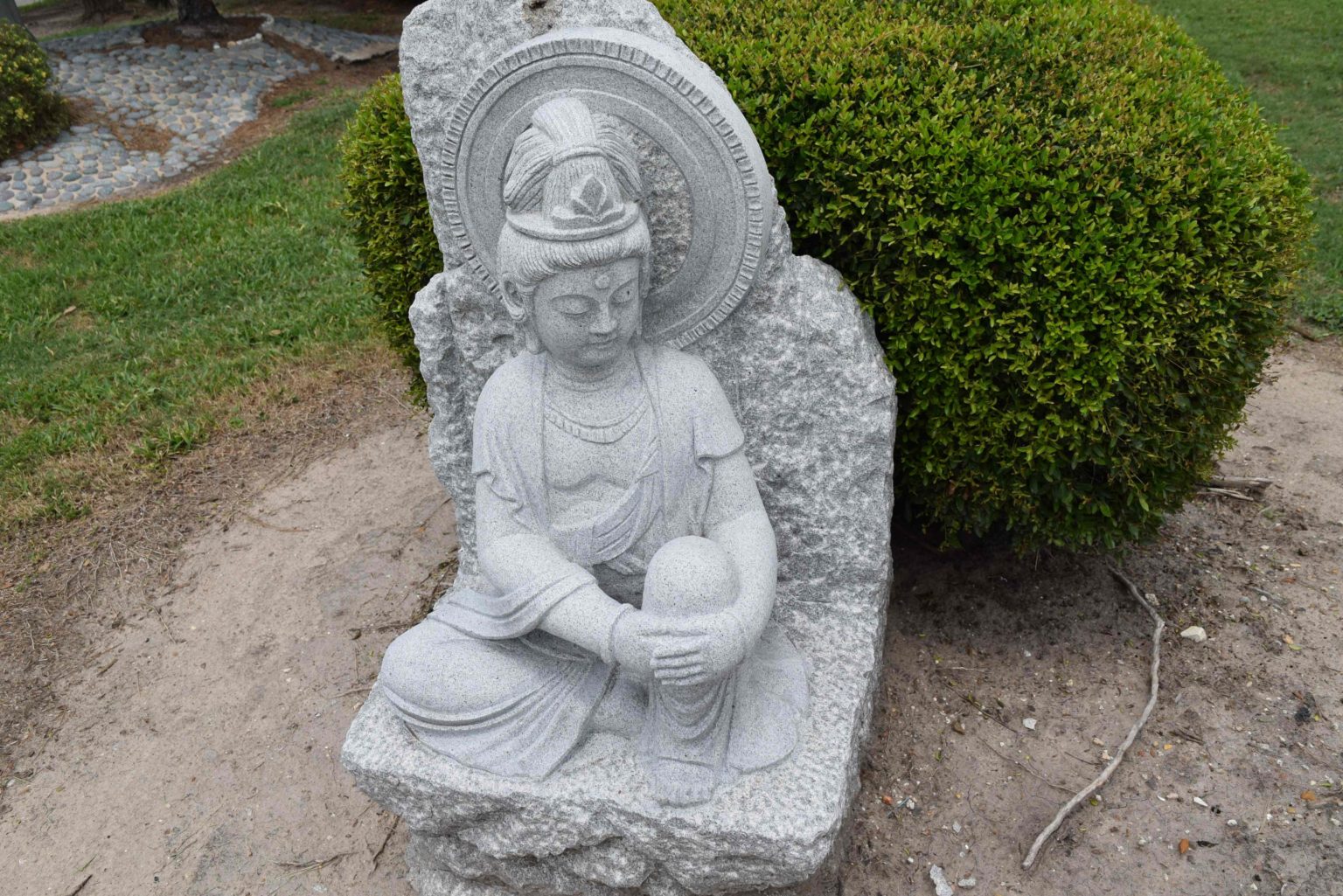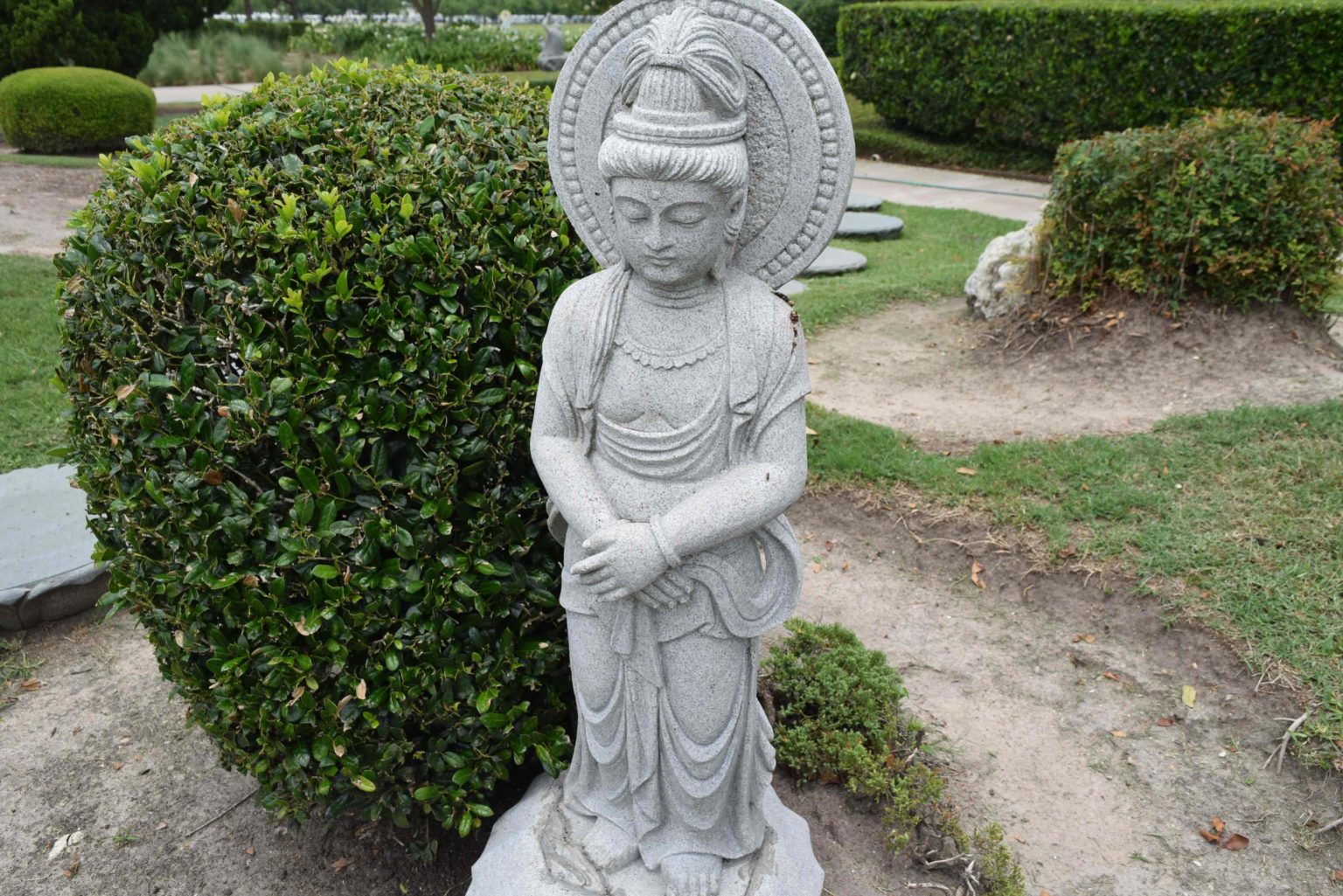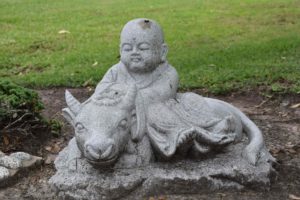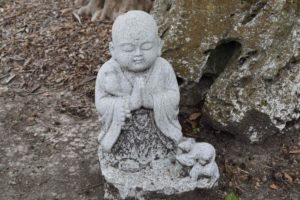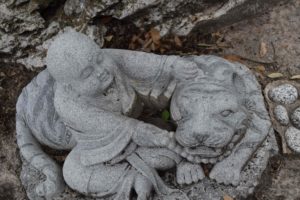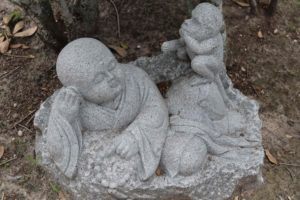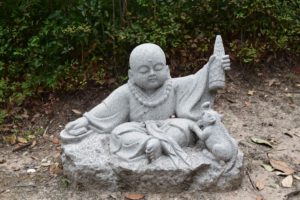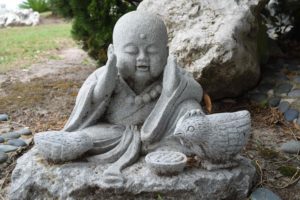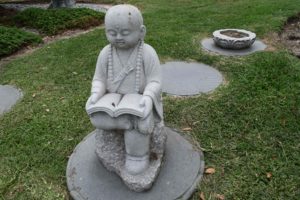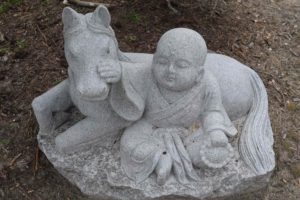Zen Garden
The Zen Garden seeks to avoid an ornate display, striving for integration with the depth of nature to demonstrate the beauty of purity, simplicity, and spirituality. Statues of Buddha, arhats, Avalokitesvara Bodhisattva, and novice monks as well as rocks, stone lamps, bowls, flowers, and trees are fittingly placed to lead people into the quiescence of Zen for their spirit to wander, easing the stress of life.
There is a world in a flower, a Tathagata in a leaf; the ultimate bliss in a grain of sand, a pure land in each place; affinity in every smile, purity in every thought; every object in nature has a deep Zen meaning. In Chung Mei Temple Zen Garden, space and objects of nature interact in quietude for people to calm their minds between heaven and earth.
Arhats
Sakyamuni Buddha wanted the Dharma to spread to future generations for sentient beings to have the opportunity to hear the teachings, he instructed sixteen arhats to remain in the world to propagate the Dharma in different regions. After Buddhism was spread to China, the sixteen arhats became the subject of artistic creations, and later they evolved to be the Eighteen Arhats.
An arhat has eliminated all afflictions and no longer suffers transmigration in samsara. Having perfected cultivation to guide sentient beings to practice virtues, the arhat is a sage truly worthy of offerings from both humans and devas.
Arhats are often portrayed with a frowning or contemplative expression, which signifies an awareness of suffering in the world and compassion for all sentient beings. Each arhat displays a different essence and unique characteristics, they may be contemplating, meditating, or dancing, which serve as an inspiration for sentient beings. They teach us that while people have different appearances and aptitudes, as long as we bring forth our strengths and strive to practice wholesomeness, we will attain Buddhahood.
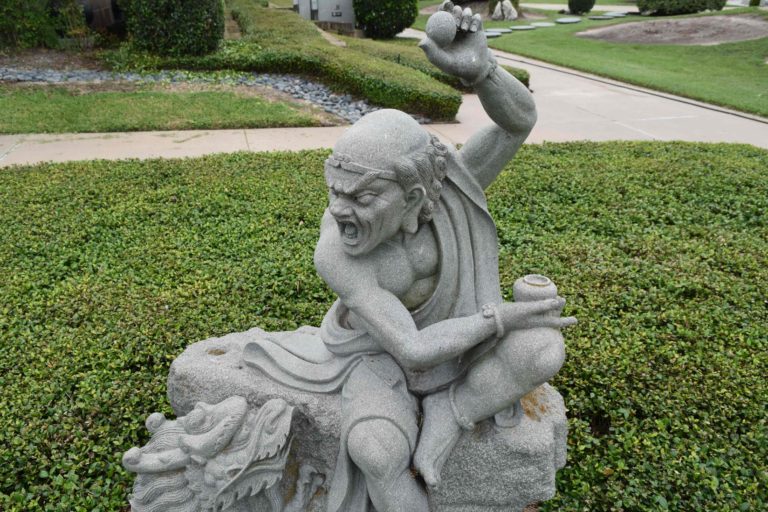
The Dragon Subduing Arhat – Honorable Mahākāśyapa
Mahākāśyapa was one of Sakyamuni Buddha’s ten great disciples. When the Buddha held a flower and smiled at Vulture Peak, not speaking a word, only Mahākāśyapa understood that the Dharma must be appreciated with the mind and not be expressed with language or words.
The River Crossing Arhat - Honorable Bhadra
Carries sutras to traverse east, propagating the Dharma; climbs over mountains and wades across water, universally delivering sentient beings.
The Honorable Bhadra was born under the bhadra tree, his mother named him Bhadra and sent him to a monastery to become a monk. According to legend, the Honorable Bhadra was the first person to bring Buddhism to the East Indies. He took a boat from India to the island of Java in the East Indies to propagate the Dharma, hence, was called the River Crossing Arhat. He crossed the river like a dragonfly, touching the water lightly; free and at ease, transcending the boundless ocean of suffering.
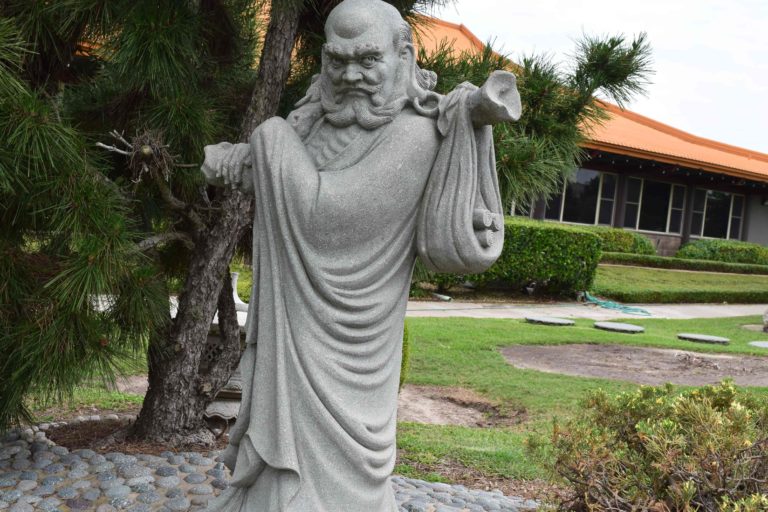
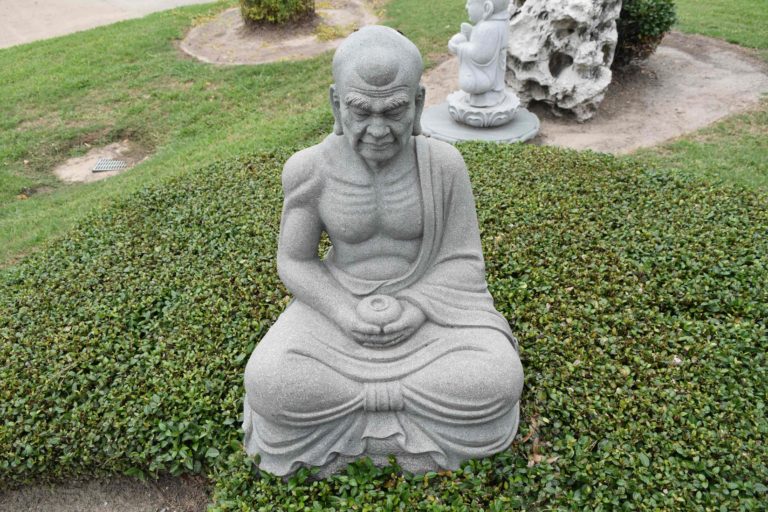
The Meditating Arhat – Honorable Nakula
Cultivates a pure mind with a carefree composure; exudes tranquility and auspiciousness while entering the Ultimate Bliss.
Nakula means great strength, this arhat was a warrior with great strength who later became a monk and cultivated to attain enlightenment. The Honorable Nakula contemplated the truth of the universe in meditation, and after attaining enlightenment, he spoke the Dharma to liberate sentient beings.
The Open Heart Arhat – Honorable Jivaka
Displays an open heart to show Buddha, exhibiting supernatural power; is incomparable with others, demonstrating the Buddha’s power is boundless.
The Honorable Jivaka was the Honorable Śubhakarasiṃha, a prince from Central India. When the king made him the crown prince, his younger brother revolted. He said to his brother, “You be the king, I want to be a monk.” His brother did not believe him, he further said, “I only have Buddha in my heart. If you don’t believe me, see it for yourself!” Strangely enough, when he opened his clothes, his brother indeed saw a Buddha in his heart, hence, he believed him and ended the rebellion.
The Honorable Jivaka showed his heart to reveal that if all sentient being always maintain a pure mind, commit no bad karma, and strive to do good deeds, they are buddhas and their mind is the buddha mind.
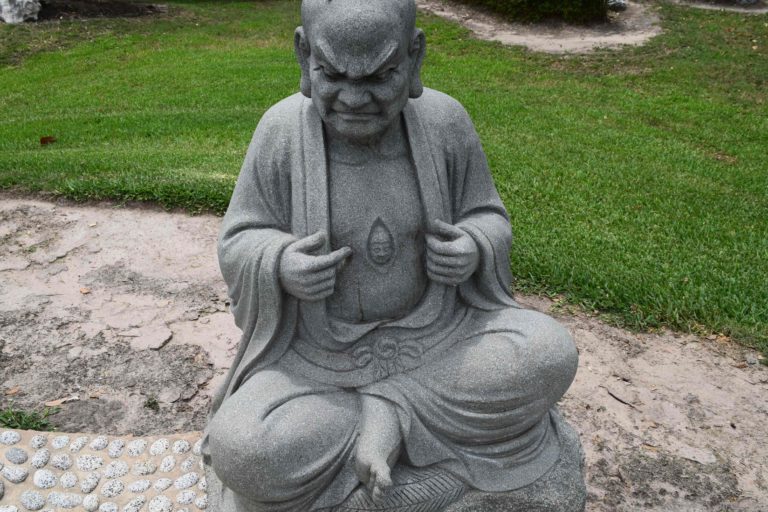
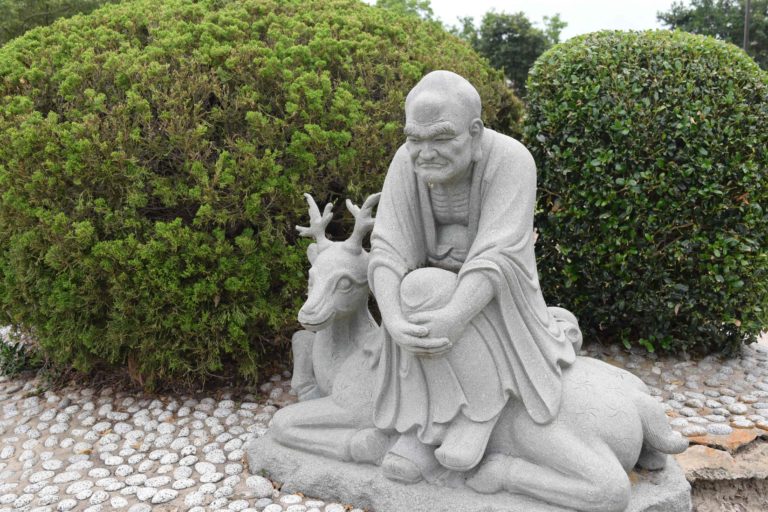
The Deer Riding Arhat – Honorable Pindola
The Honorable Pindola once rode a deer to fly into the palace and spoke the Dharma to the king. Afterward, the king practiced kind deeds and ruled the country with benevolence, transforming it into a pure land. Hence, he was called the Deer Riding Arhat.
The Ear Picking Arhat – Honorable Nagasena
Tranquil and content, invigorating and insightful; full of wit and humor, exuberant with interest.
Honorable Nagasena was renowned in India for his teaching of purity of hearing, he was therefore called the Ear Picking Arhat.
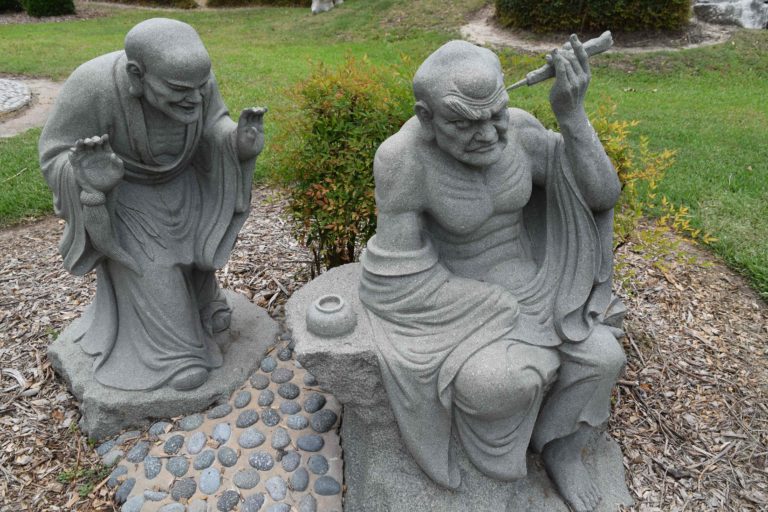
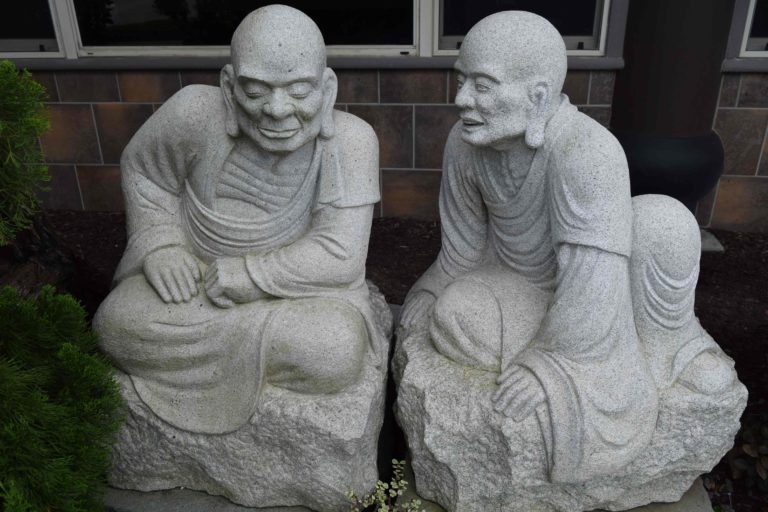
The Persuading Arhat – Honorable Śayata
The Honorable Śayata once expounded the Dharma to Ānanda, who is foremost in listening to the Dharma. He encouraged Ananda to place equal emphasis on practice and understanding, and be diligent in cultivating the Way of Buddhahood.
The Elephant Riding Arhat – Honorable Kalika
Rides on an elephant with great dignity, chanting aloud the sutras; caring for sentient beings, mindful of all directions of the universe.
Elephant in Sanskrit is kali, and kalika means the person riding an elephant. The elephant is a symbol of the Dharma, signifying the elephant’s extraordinary strength and the ability to work hard and travel far. Honorable Kalika was an elephant trainer before becoming a monk and attaining enlightenment, therefore, he is known as the Elephant Riding Arhat.
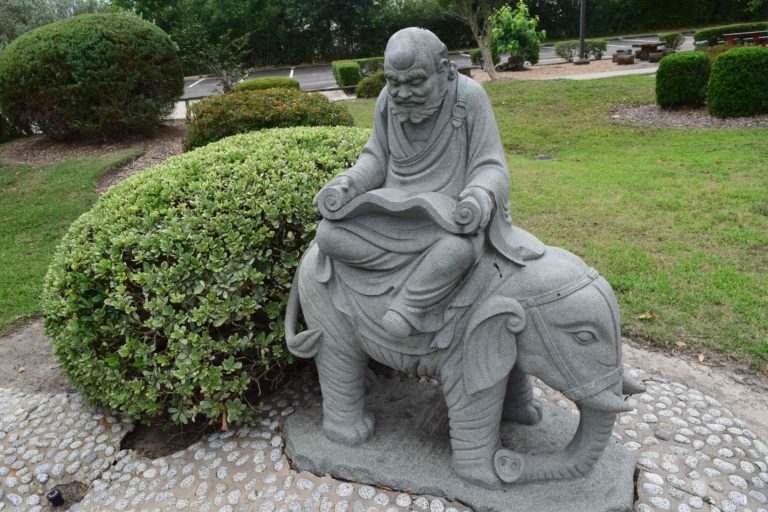
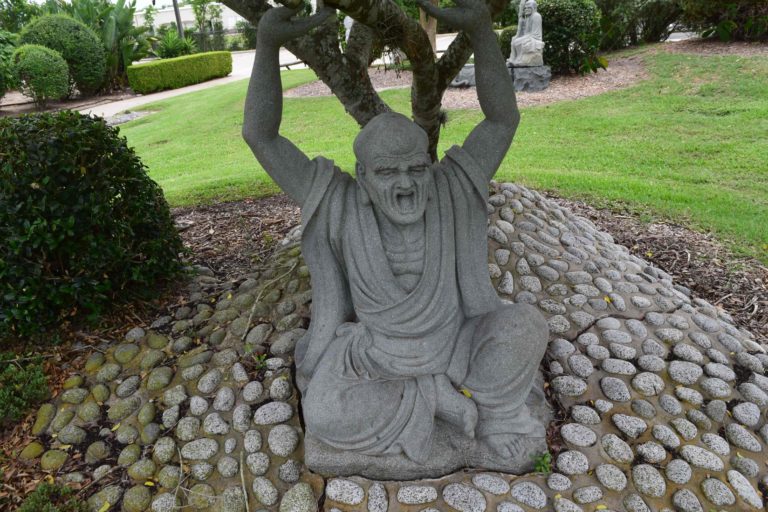
The Raised Arm Arhat – Honorable Panthaka
Exhibiting tranquility and ease, yawning and stretching; with a skillful spirit, living in ease and joy.
The Honorable Panthaka is known as the Raised Arm Arhat, because after meditating he often raised his arms to stretch his back and take a deep breath.
The Long Eyebrow Arhat – Honorable Ajita
A kind elder, an enlightened monk of the Way, clearly seeing the universe to gain a deep understanding.
The Honorable Ajita was born with two long white eyebrows. Someone said to his father, “Your son has long eyebrows, it is a characteristic of a buddha.” Because of this, his father sent him to a monastery to become a monk.
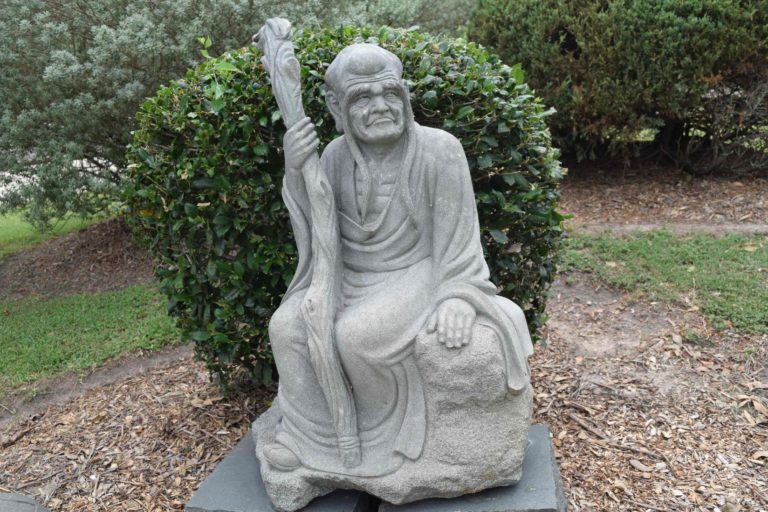
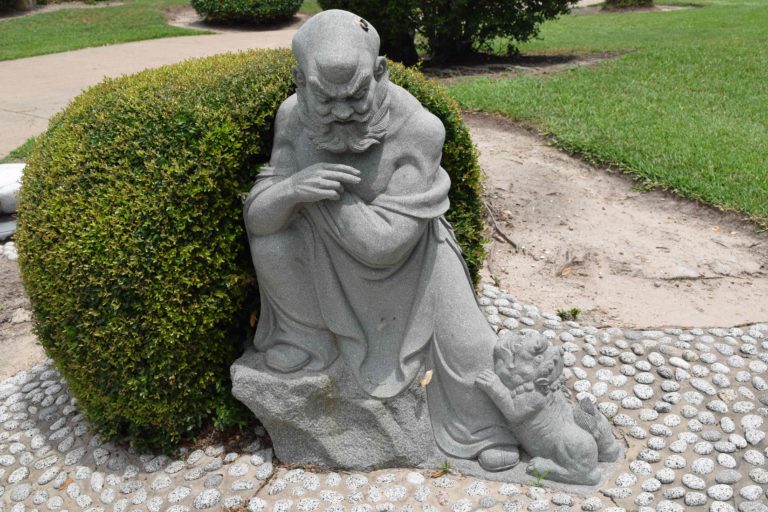
The Laughing Lion Arhat - Honorable Vajraputra
Honorable Vajraputra was eloquent and learned with a great memory, proficient in sutras and excelled in speaking the wondrous Dharma. However, he hardly expounded the Dharma and often did not speak a word all day. Ananda was confounded and asked him, “Honorable, why don’t you speak the wondrous Dharma?” Honorable Vajraputra replied, “Talking too much may not be accepted by others. Although everything you say is of great value, people often find it offensive. I find Dharma joy within silence and hope that everyone can do the same.” Honorable Vajraputra always had a lion cub by his side, and he was called the Laughing Lion Arhat.
The Banana Tree Arhat – Honorable Vanavasin
Residing in leisure and seclusion, regarding the universe with eminence; possessing sagacity and divinity, transcending the mortal world.
伐那婆斯尊者,常在芭蕉樹下修行,世間的喧嚷煩惱不能侵擾他的心,故名芭蕉羅漢。
相傳伐那婆期出生時,雨下得正大,園中芭蕉樹被大雨打得沙沙作響,父親因此為他取名為雨。
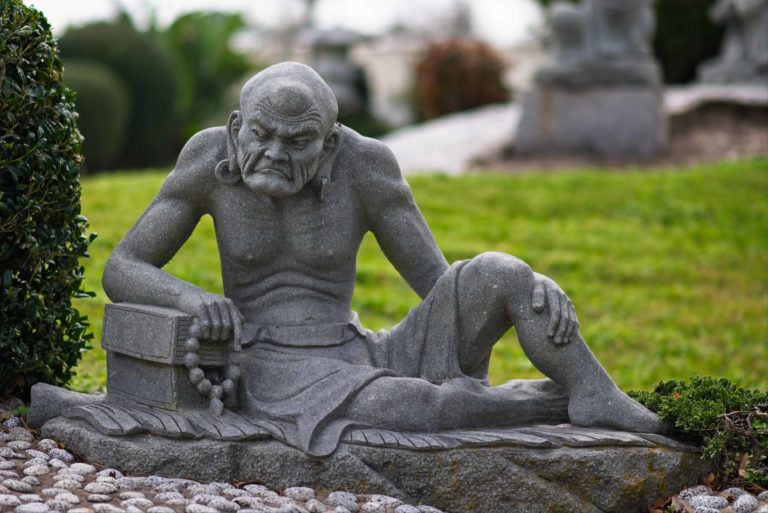
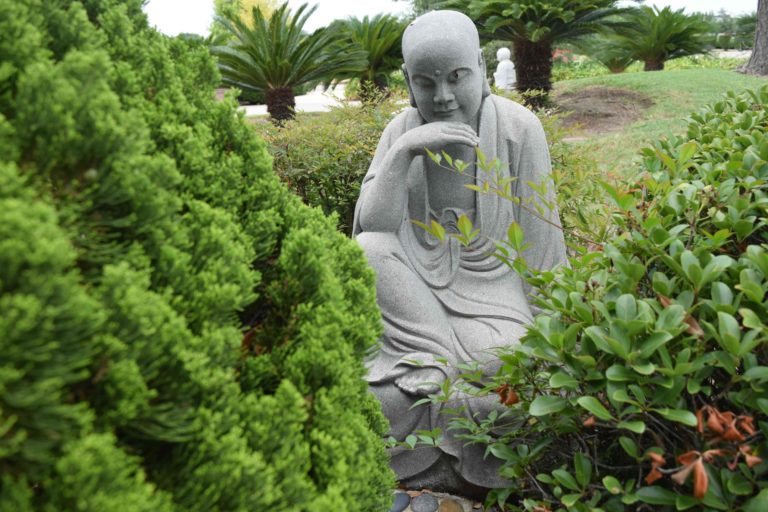
The Contemplative Arhat – Honorable Rahula
The Honorable Rahula renounced in his childhood to become the first novice monk in the Sangha. He practiced patience under insult and was foremost in esoteric practices.
The Stupa Raising Arhat – Honorable Subinda
A seven-story pagoda, supernatural power of the Dharma; majestic presence without anger, transcendent in practice.
Honorable Subinda was the last disciple of the Buddha. He raised the pagoda in his hands, memorializing the Buddha’s teachings and inspiring sentient beings to accrue merits for attaining Buddhahood.
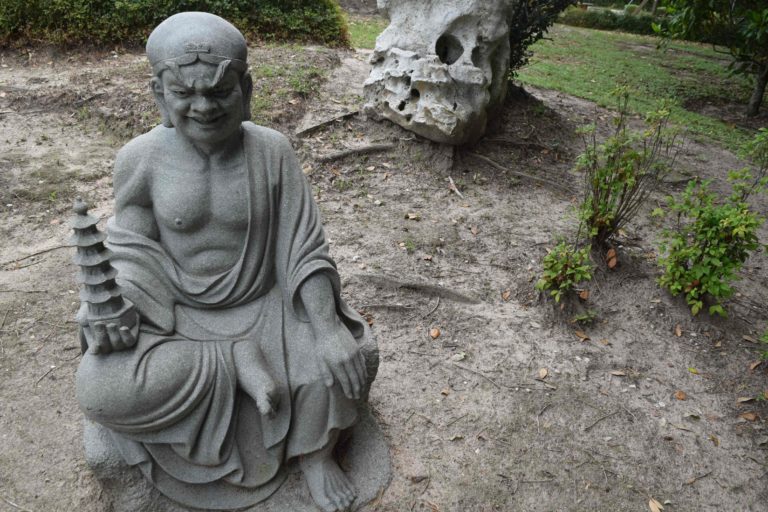
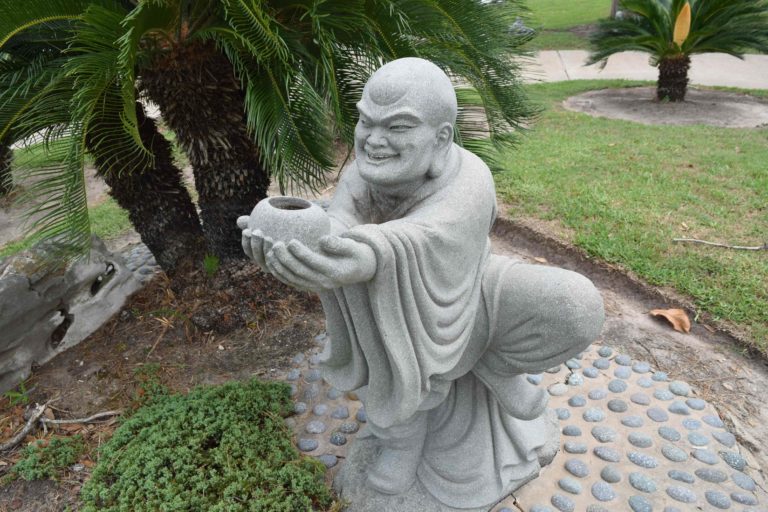
The Bowl Raising Arhat – Honorable Kanaka-bharadvaja
Honorable Kanaka-bharadvaja practiced alms begging with compassion and equality, benefiting people by offering them an opportunity to cultivate blessings. He taught the Dharma through his actions and speech. When begging for alms, he would raise his alms bowl high, and was known as the Bowl Raising Arhat.
The Bag Carrying Arhat - Honorable Angida
The Infinite Life Buddha, carrying a treasure bag of universe’s secrets, happily fulfills all wishes, full of joy.
The Honorable Angida eradicated all afflictions and was not affected by defamation, honor, gain, loss, or any external states. He embraces all matters of the world in his mind, good or bad, right or wrong, just as his bag can carry all objects, he is always joyous and at ease.
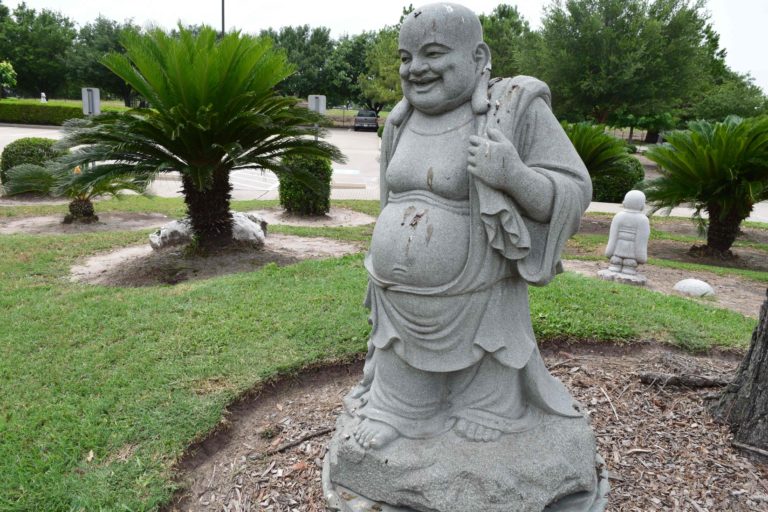
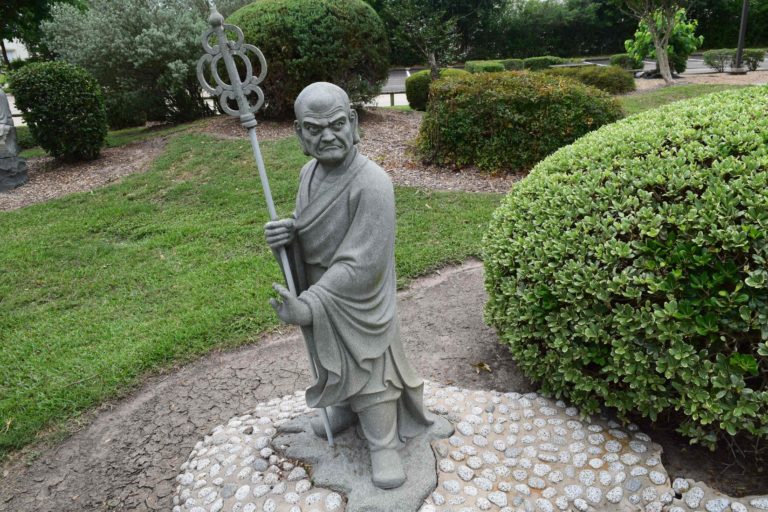
The House Guarding Arhat – Honorable Cudapanthaka
Powerful and fearless, observing with alertness; wielding the Chan staff, valiantly annihilating evil.
When the Honorable Cudapanthaka asked for alms, he often banged on the door with his fist, asking people in the house to come out and make an offering. One time, he accidentally smashed a dilapidated house and had to apologize to the owner. He asked the Buddha for guidance, who said, “I will give you a metal staff, in the future when you ask for alms, you don’t have to bang on people’s doors. Just shake this staff on the door, and those who have charity will open the door, if not, they don’t have charity. You simply go to another house!” The staff had several rings on it and made a slight noise when shook. When people heard this sound, they readily opened the door to make offerings.
Bodhisattvas
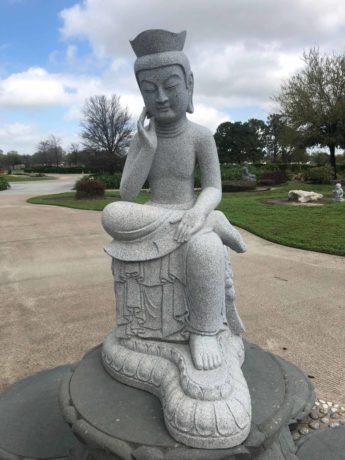
The Contemplative Maitreya
The body is slim and well-proportioned, and he is in a contemplative state; this is characteristic of the half-lotus contemplation.
The Contemplative Maitreya is also known as Precious Crown Maitreya.
He has a smile, an elegant and graceful posture, and a serene expression, wearing a tri-fold crown of three semicircles known as lotus crown with no embellishment on the surface.
His upper body is bare other than the two collars on his neck, there are no other ornaments, exhibiting a simple artistic beauty.
.
Guanyin (Avalokiteśvara) Bodhisattva
Guanyin (also known by Guan Yin or Kuan Yin) is the Buddhist bodhisattva associated with compassion.
She is the East Asian equivalent of Avalokiteśvara and has been adopted by other Eastern religions including Chinese folk religion. She was first given the appellation of "goddess of mercy" or the mercy goddess by Jesuit missionaries in China.
The Chinese name Guanyin is short for Guanshiyin, which means "[The One Who] Perceives the Sounds of the World." On the 19th day of the sixth lunar month, Guan Shi Yin's attainment of Buddhahood is celebrated.
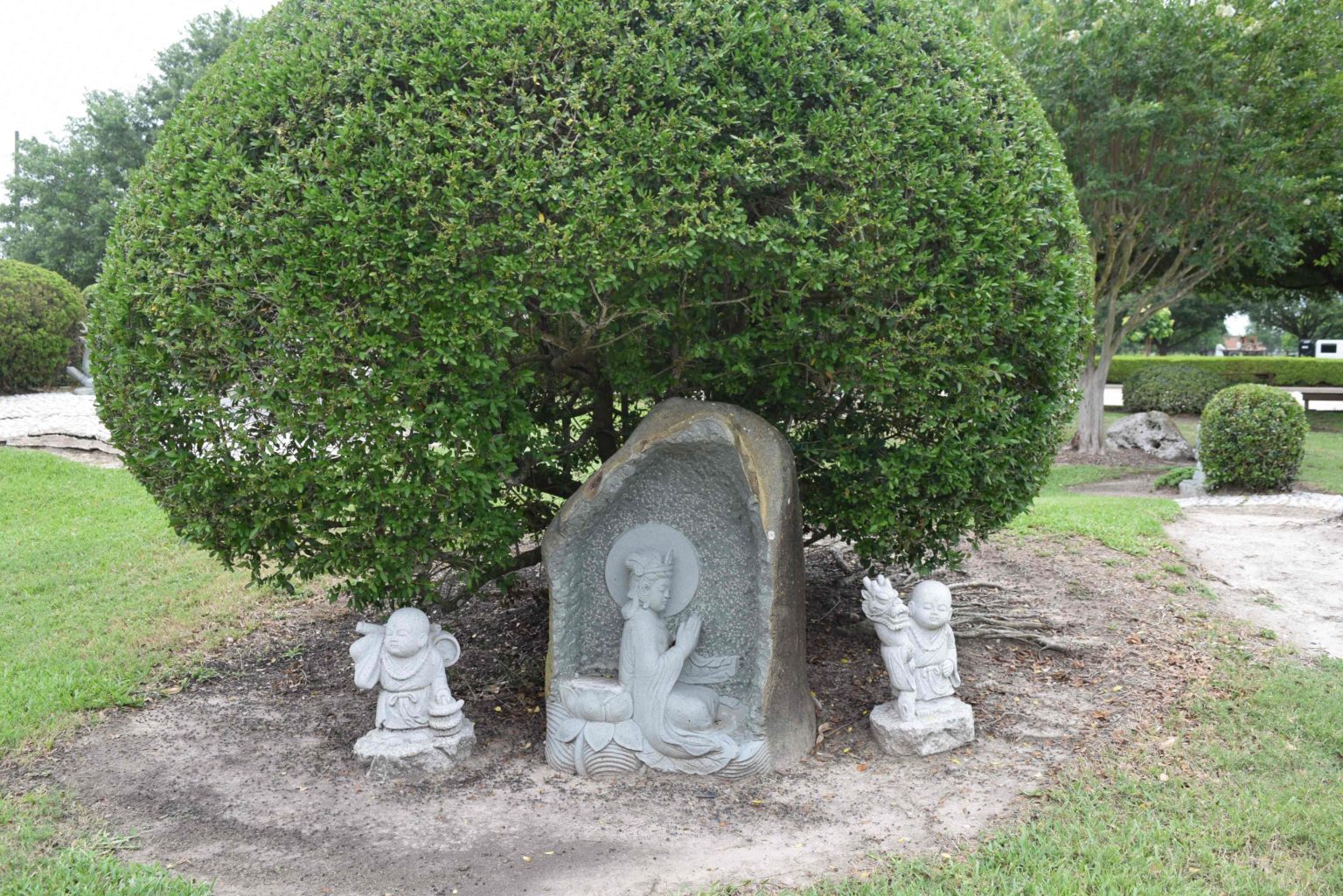
The Joined Palms Guanyin (Avalokitesvara)
This Bodhisattva joins palms in a humble pose with the mind of emptiness, and is called the Joined Palms Avalokitesvara. Joining palms signifies the fulfillment of intrinsic nature and purity. The ten digits are symbolic of the scattered and delusional mind, by joining the palms every matter comes together in single-mindedness. It also signifies taking refuge single-mindedly, single-minded and unperturbed, as well as when the mind is concentrated, any matter can be accomplished. Avalokitesvara Bodhisattva manifests in many forms in accordance with the needs of sentient beings, liberating all whether they are noble, lowly, virtuous, or foolish.
Lotus Leaf Guanyin (Avalokitesvara)
Avalokitesvara sitting on a lotus leaf is also known as the Lotus Leaf Avalokitesvara. This Bodhisattva rides on the lotus petals, floating on water and flowing with the waves in tranquility and ease. Avalokitesvara Bodhisattva is the embodiment of compassion and universal love. We should pay homage and embrace the Bodhisattva’s mind as our own; with more compassion, less resentment and selfishness, we can transform suffering into joy.
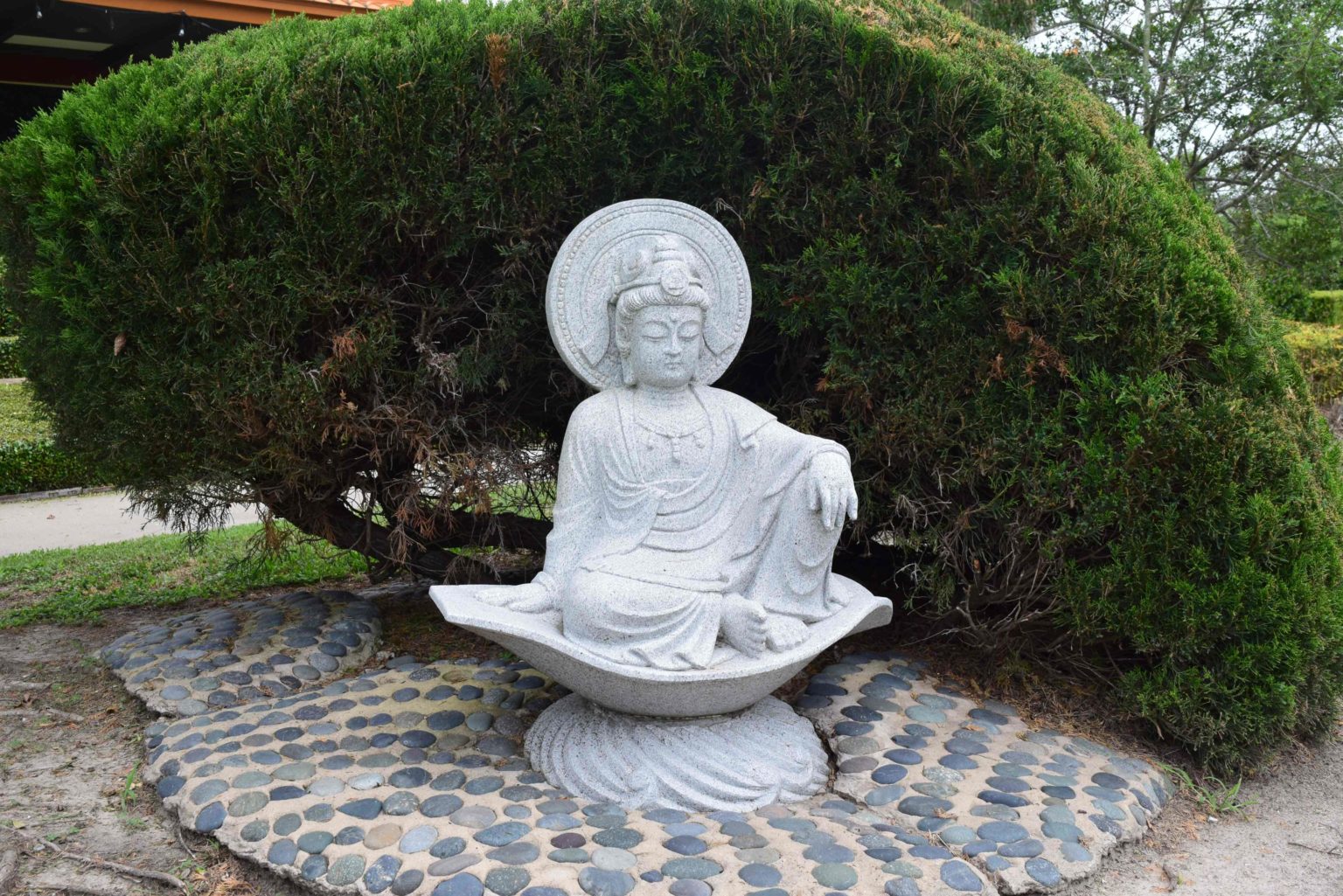
Novice Monks
The stone statues of adorable novice monks at the Zen Garden include Joining Palms Novice Monk, Sutra-reading Novice Monk, Bowl-holding Novice Monk, and the twelve Zodiac Novice Monks. They are dignified, yet cute and adorable.惹人喜爱。
Novice monks renounced as children are called sramanera, meaning to diligently practice morality, concentration, and wisdom for extinguishing greed, anger, and delusion. This is the principle for novice monks to cultivate the Way. Though they may be young, through gradual practice, they could become a great Dharma King one day.绽放生命美麗的光華 .
